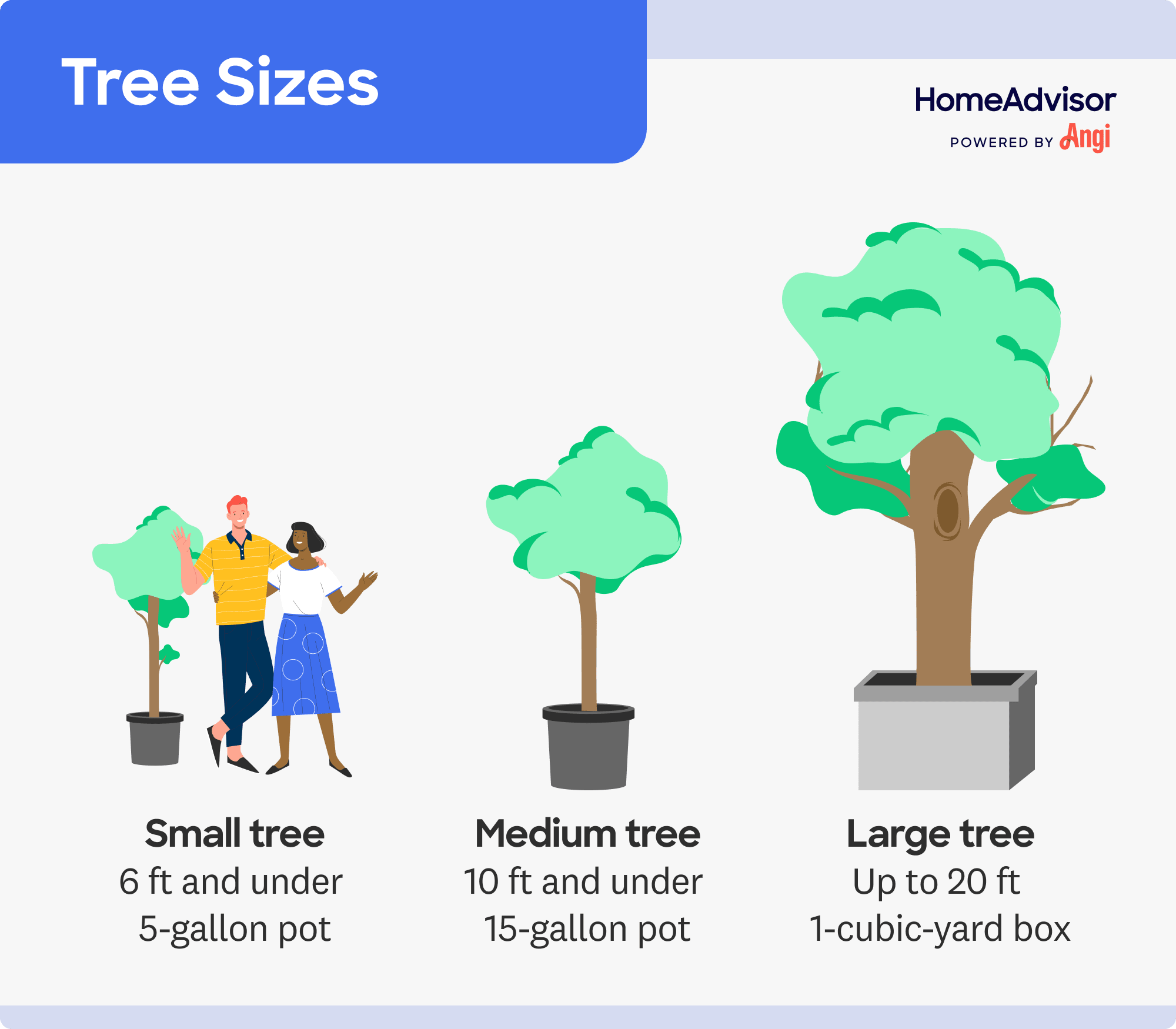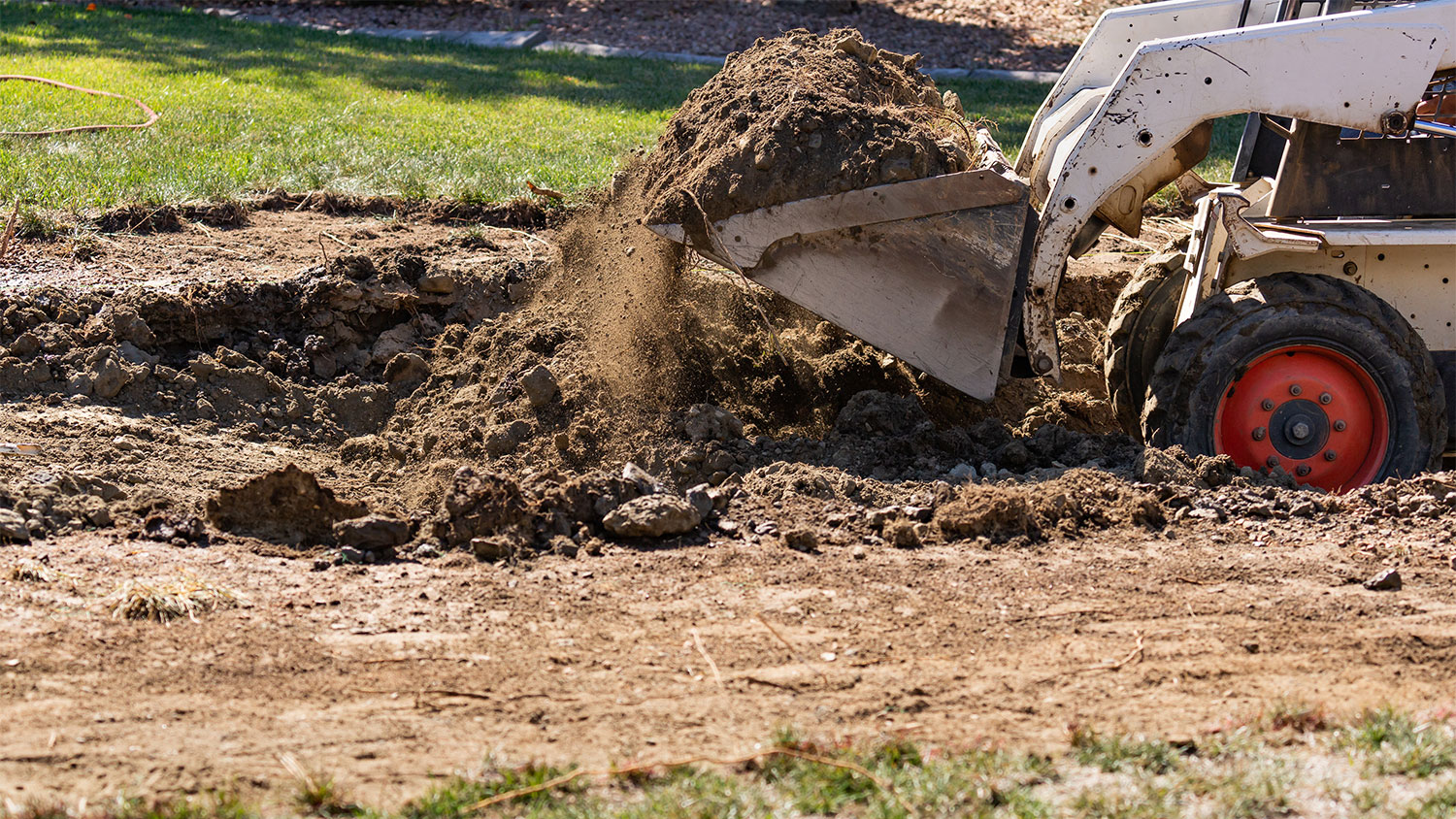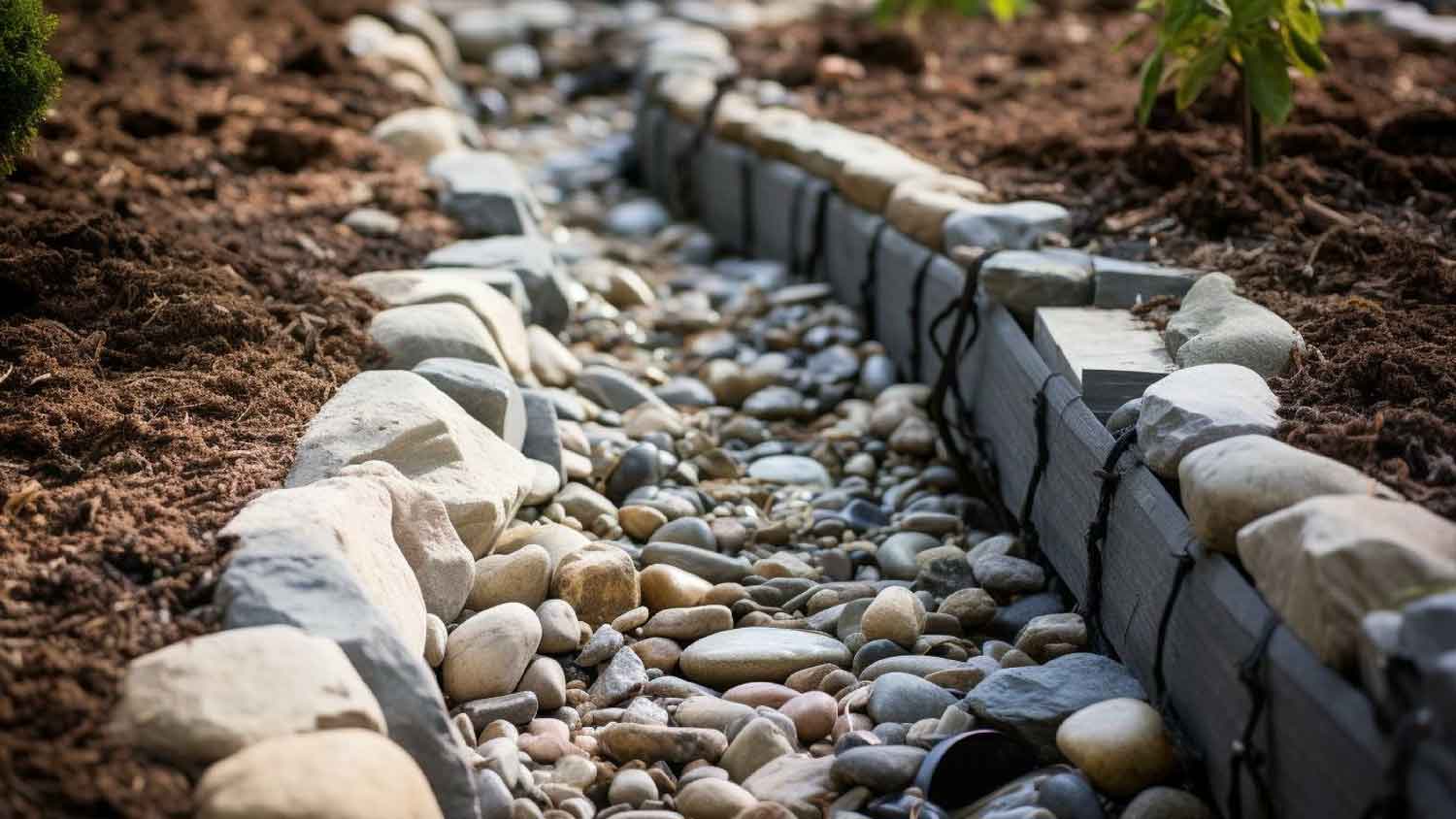
Learn who to hire to regrade your yard. Compare grading contractors vs landscapers, see the process, timelines, and average costs to plan confidently.
The average cost to plant trees is $300


The average cost to plant a tree is $300, with prices ranging between $30 and $10,000.
Key cost factors include the size and type of tree, number of trees, labor rates, accessibility, and soil quality.
Planting multiple trees can reduce the cost per tree but increase overall expenses.
Hiring a professional arborist ensures proper planting and increases the likelihood of tree survival.
Strategically planted trees can enhance property value, provide shade, and reduce energy costs.
This article was updated using automation technology and thoroughly reviewed for accuracy by HomeAdvisor Editor Ryan Noonan.
On average, planting a tree costs $300, with most homeowners spending between $150 and $2,000 per tree. Hiring an arborist to plant trees costs between $50 and $150 per hour, with prices varying depending on the tree size, type, and location. Planting a tree adds beauty to your yard, boosts curb appeal, and can even increase your property's value. Hiring a professional arborist ensures the tree is planted correctly, increasing its chance of thriving.
The cost to plant a tree depends on factors including the tree size, quantity, required materials, and local labor rates.

The size of your tree significantly impacts planting costs. Larger trees require bigger containers, use more soil, and weigh more, which increases transport and labor costs. Due to their weight and size, they may also need special equipment for excavation and installation.
| Size of Tree | Height | Average Cost per Tree |
|---|---|---|
| Small tree | Under 6 feet | $100 |
| Medium tree | Under 10 feet | $255 |
| Large tree | Up to 20 feet | $2,420 |
The more trees you plant, the lower your cost per tree will be. Arborists often charge a base fee that covers travel, equipment, and supplies, so adding extra trees spreads out these costs. For instance, planting one small tree might cost around $100, but each additional tree could add only $40 to $70.
The type of tree you choose determines material costs. Common varieties like fruit trees are more affordable, while rare or slow-growing species like shaded trees can be pricier due to their scarcity.
| Type of Tree | Cost Range per Tree |
|---|---|
| Evergreen | $20-$500 |
| Fruit | $20-$200 |
| Ornamental | $30-$300 |
| Shade | $40-$1,000 |
| Flowering | $25-$300 |
| Nut | $25-$300 |
Labor, including transport, makes up nearly 30% of your tree-planting project. Hiring a local arborist costs between $50 and $150 per hour. Planting a small tree might take one person an hour or two, while installing a large tree can require a team and a full day due to the need for excavation, site preparation, and specialized equipment.
Factors including the site's accessibility, required permits, soil quality, and landscaping all impact the total price of planting a tree. Plus, you'll need to account for ongoing costs, such as maintenance and landscaping.
Limited access to the planting site can increase labor costs. If the area is far from a vehicle dropoff point, narrow, or challenging to access, you'll pay more in labor due to the extra time and effort required to transport the tree. Navigating tight spaces or carrying supplies over long distances requires additional labor, and removing obstacles like fences or shrubs to improve access can also add to the cost.
You often won't need a permit to plant small and medium trees. However, some localities require permits for taller trees, so check with your arborist or local planning office before beginning the project.
Good soil quality can reduce your planting costs. Soft, loamy soil free of rocks is easier and quicker to work with. In contrast, heavy clay or rocky soil can be more challenging and require additional work or soil amendments like high-quality topsoil and nutrients to ensure your tree thrives.
Keep in mind the ongoing costs of caring for your new trees. Regular pruning and trimming are essential to maintain their health and appearance. Smaller trees mostly need watering and mulching, while larger trees benefit from routine pruning and shaping. Incorporating these tasks into your regular garden maintenance can help keep costs down.
| Service | Average Cost |
|---|---|
| Trimming and pruning | $400–$800 per tree |
| Fertilization | $50–$200 per treatment |
| Pest control | $50–$200 per tree |
| Inspection | $100–$250 |
| Mulching | $50+ per tree |
| Tree removal | $250–$2,500 |
Planting small to medium trees can be a DIY project if you're comfortable with manual labor and have good soil conditions. However, for larger trees, soil amendments, or if your yard requires grading, it's best to hire a local arborist. They have the necessary tools and equipment for large tree-planting projects, helping you save on the cost of materials. An arborist can also advise on the best tree species for your yard and ensure they're planted correctly to thrive for years to come.
No place is more important than your home, which is why HomeAdvisor connects homeowners with local pros to transform their houses into homes they love. To help homeowners prepare for their next project, HomeAdvisor provides readers with accurate cost data and follows strict editorial guidelines. After a project is complete, we survey real customers about the costs to develop the pricing data you see, so you can make the best decisions for you and your home. We pair this data with research from reputable sources, including the U.S. Bureau of Labor Statistics, academic journals, market studies, and interviews with industry experts—all to ensure our prices reflect real-world projects.
From average costs to expert advice, get all the answers you need to get your job done.

Learn who to hire to regrade your yard. Compare grading contractors vs landscapers, see the process, timelines, and average costs to plan confidently.

Wondering who to hire to fill in an uneven lawn? See if a landscaper or general contractor fits your project and learn what to expect before you book.

Curious who to hire for mulching? Compare mulching companies, landscapers, and tree services, plus DIY vs. pro costs, to choose the right help today.

How much river rock will your next landscaping project need? Find out with our river rock calculator.

How much topsoil do you really need for your project? Dig into this topsoil calculator to find out.